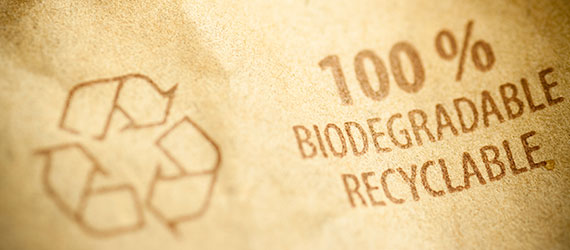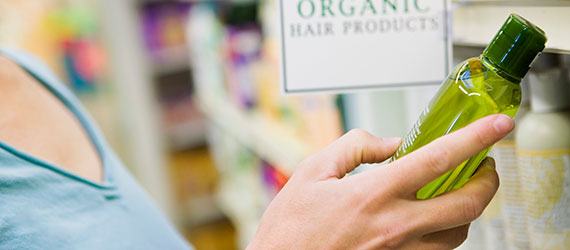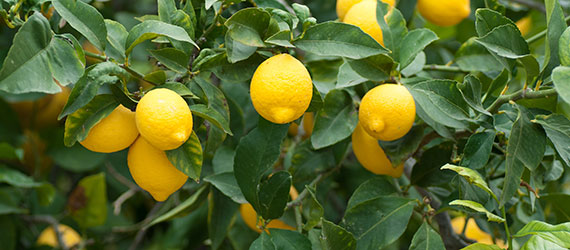Don’t I need a biodegradable product to clean sustainably?
Biodegradability is an important parameter as far as cleaning product ingredients are concerned, and most ingredients in cleaning products are rapidly biodegradable. The surfactants have to be rapidly and completely biodegradable by law under the EU Detergents Regulation.

So when choosing products, the key point to check is that it complies with the law on biodegradability and that it has been risk assessed to ensure all ingredients are removed in sewage treatment down to levels that will not harm the environment.
Biodegradability is a characteristic of ‘organic’ substances (those based on carbon, like soap) and it means that the ingredient is broken down by microbes when it goes down the drain and through sewage works or septic tanks, mainly into CO2 and water.
Biodegradation is an important way of ensuring that the organic ingredients in cleaning products are removed from wastewater and don’t enter rivers for example in quantities that might be harmful, ingredients can be removed by other processes.
But biodegradability is not the be all and end all. What matters is ensuring that living things in the environment don’t suffer harm. After a cleaning product has been used and gone down the drain, each ingredient must be sufficiently removed during sewage treatment, by biodegradation or other processes, such that no harmful amounts enter the environment. Scientific risk assessments are carried out to ensure this happens for each and every ingredient.
Some cleaning products claim or imply they are 100% biodegradable. That would mean they have no inorganic components, since biodegradation refers to organic (carbon-based) substances. Such a claim can only be supported by ultimate biodegradability tests on each separate ingredient. Biodegradability tests on the complete product are meaningless.
Since all ingredients are routinely removed to safe levels so there’s no harmful effect, improving biodegradability cannot reduce the environmental impact, though it can serve only to give extra assurance through even better margins of safety.
Don’t I need to choose a natural product to clean sustainably?
No you don’t. People often think that natural products are safer for them and the environment and more sustainable than man-made things, but that’s a misconception. The fact is that everything on the planet is made of the same 90-odd chemical elements so dividing things into “natural” and “chemical” can be seriously misleading.
Many people are surprised to learn that the most toxic substance known isn’t an industrial chemical or chemical weapon – in fact it’s a natural product, botulinus toxin. Even more surprisingly, this is used safely by millions of people, in tiny doses, in the form of Botox. It just goes to show it’s the dose that determines whether something will cause harm or not.

Natural substances aren’t necessarily safe for the environment either. Nature produces many substances that are highly toxic to various forms of life. Pyrethrum, from chrysanthemums, and rotenone, from the roots of certain plants of the pea family, are highly toxic to both insects and fish.
Natural substances aren’t guaranteed to biodegrade quickly either, and many wouldn’t pass the biodegradability tests which all surfactants used in cleaning products must pass. Trees, for example, contain many substances that are both toxic to aquatic life and slow to biodegrade. So wood that’s thousands of years old can be retrieved from waterlogged ground, and paper mills that process wood pulp must take great care treating their effluent to avoid harm to aquatic life.
The one way in which natural ingredients can have an advantage in terms of sustainability is that they are potentially renewable. But many other factors come into play here, and renewable raw materials are only an advantage if they are sustainably produced.
On the other hand, synthetic ingredients frequently have the edge in terms of performance – that’s why they were developed – and performance is vital for sustainability. Some of them are simply modified versions of natural molecules re-designed to perform better. Of course, even natural raw materials need some chemical processing before they become useful ingredients – just try washing clothes with coconut oil rather than the range of cleaning ingredients it can be converted into!
Manufacturers have for many years used both natural and synthetic raw materials and ingredients, selecting whichever is best for the product in question to optimize the sustainability profile across the whole life cycle.
Shouldn’t I look for a product made from renewable raw materials?
Raw materials that come from renewable sources such as trees and crops that can be grown year after year are intrinsically more sustainable than those that come from resources such as oil where resources are finite. So companies that sign the A.I.S.E. Charter for Sustainable Cleaning commit to looking for opportunities to use renewable raw materials where that can help improve the overall life cycle profile of the product.

For decades now a major part of the raw materials that go into cleaning products have come from the fruits of trees like coconuts and palms, in the form of coconut and palm oil, and increasingly from a wider range of crops like sugar and rapeseed.
The problem is that those trees and crops need land to grow, and if we tried to switch to growing all the raw material there simply wouldn’t be enough land to do it on. For example, the parts of the world most suited to growing palms and coconuts, the tropical regions, are also home to precious rainforest. There is already concern that as demands for palm oil expand, only a minor percentage of which goes into cleaning products (most going for food), suppliers are trying to meet these demands unsustainably by clearing rainforest. We need more, truly sustainable plantations to be developed before use could be substantially expanded.
The United Kingdom is committed to achieving 100% sourcing of sustainable palm oil by the end of 2015.
Despite the fact the whole world uses them every day, cleaning products currently consume only about 0.1% of crude oil production; less than 10% of all the world’s oil is turned into useful materials such as plastics or paint, fertilisers or pharmaceuticals; over 90% is simply burned as fuel.